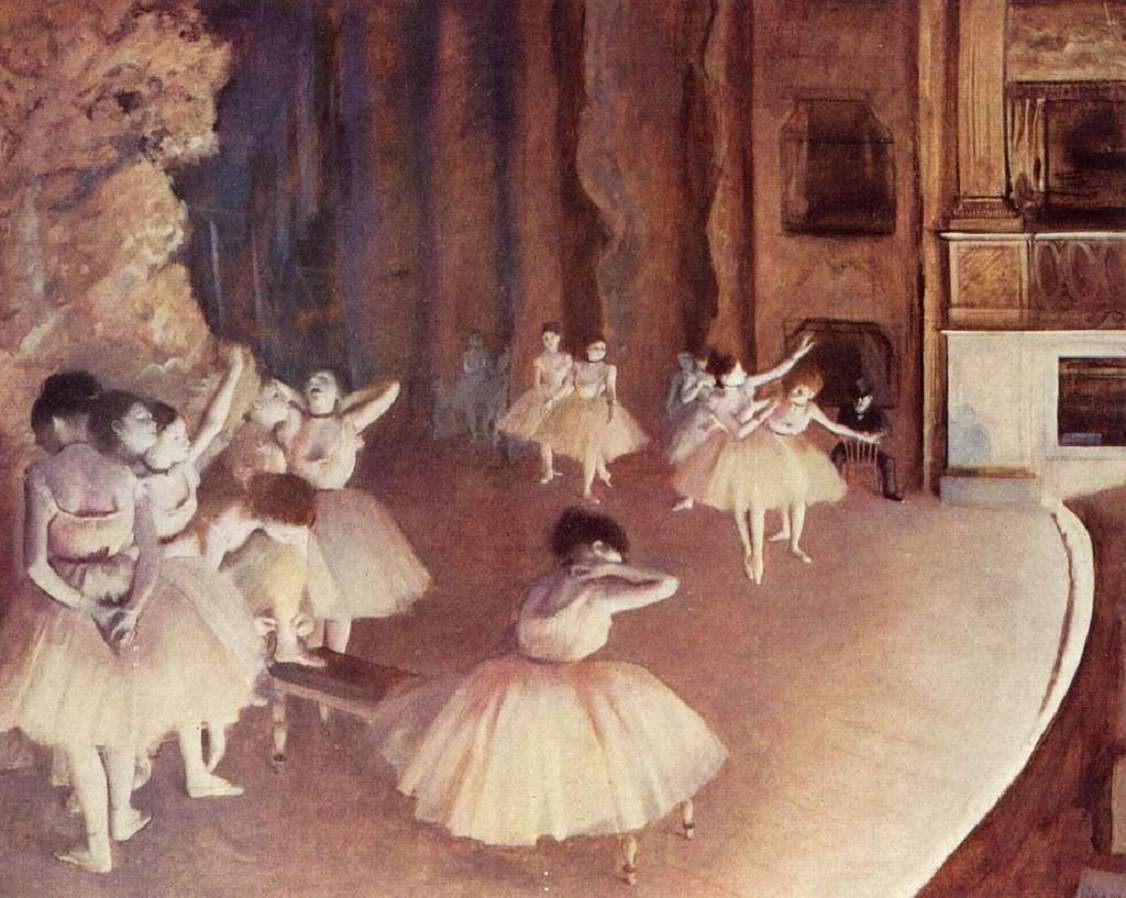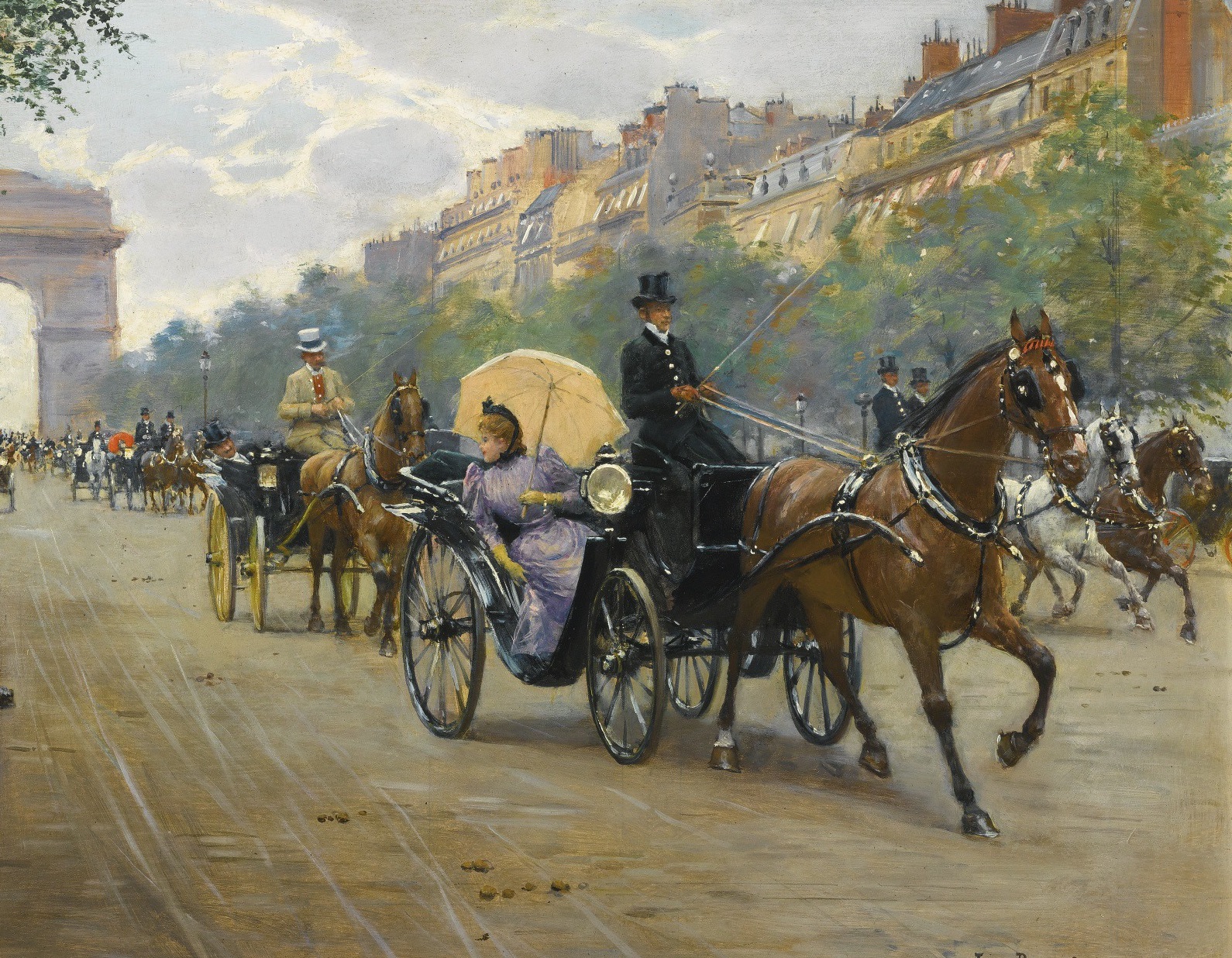The Original "Dumb Blonde"
Catherine-Rosalie Gerard Duthé was the 18th-century French courtesan who became the world’s first “dumb blonde”. But that's not the real story.
As one of the most powerful women in courtesan's in France, only the most powerful men could afford a night with Duthé, and she turned them all into simpering fools. One man was so obsessed that he got her to “teach” his 15-year-old son—but their creepy arrangement had disastrous consequences.
1. She Brought Kings To Their Knees
Catherine-Rosalie Gerard Duthé was the first ever recorded “dumb blonde,” but that wasn't her only claim to infamy. As the most exclusive courtesan of her time, Duthé used her golden locks and Venus-like body to bring Europe’s kings to their knees...and she got into quite the scandal along the way. Claude Hoin, Wikimedia Commons
Claude Hoin, Wikimedia Commons
2. Her Parents Were Nobodies
Unlike the men whose bank accounts she would drain and whose marriages she would ruin, Duthé was not born into a particularly wealthy family. She was born on November 23, 1748 in Versailles to parents of not much importance. Her father was a servant of the king while her mother was a woman of no distinction.
The pair failed Duthé in other ways, too.  Henri-Pierre Danloux, Wikimedia Commons
Henri-Pierre Danloux, Wikimedia Commons
3. Her Parents Weren't Around Much
The details of Duthé’s childhood are scarce, except that her parents didn’t seem particularly involved. Or even present. According to some sources, Duthé’s parents weren’t even there during the registration of her birth. Instead of her parents, her grandmother and her godfather signed the official paperwork.
But the family didn't even have Rosalie around for long.  Lié Louis Périn-Salbreux, CC BY-SA 4.0, Wikimedia Commons
Lié Louis Périn-Salbreux, CC BY-SA 4.0, Wikimedia Commons
4. She Dropped Out
As many respectable young women did at the time, Duthé went to a convent, Saint Aure in Paris, to learn how to be a good little pious girl. This went awry quickly. Instead of finding a deeper love of God or even a decent husband, at age 15 Duthé left the convent to go live with her aunt, Madame Duval.
Her aunt would be the one to introduce her to a life of luxury—and lewdness.
 Lomita, CC BY-SA 4.0, Wikimedia Commons
Lomita, CC BY-SA 4.0, Wikimedia Commons
5. She Met Her Destiny
While living with her aunt, Madame Duval introduced Duthé to two beautiful sisters, Marie and Géneviève Rinteau of Verrières. While they had started out mere daughters of a humble lemonade merchant, they had gone on to become famous actresses and were currently leading a lavish lifestyle.
But their acting, singing, and dancing gigs weren’t what paid for their lavish tastes. That was something very dramatic indeed. 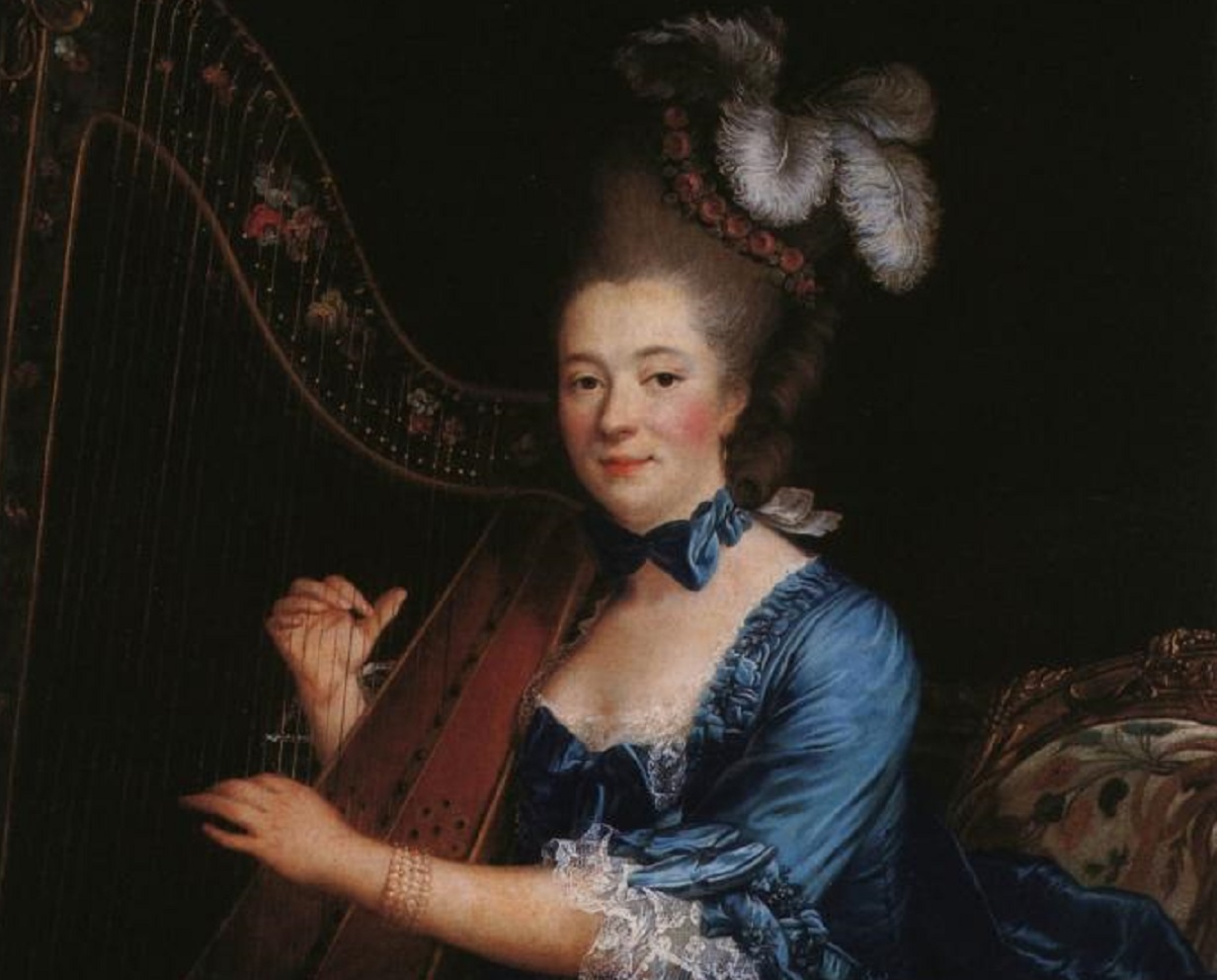 François-Hubert Drouais, Wikimedia Commons
François-Hubert Drouais, Wikimedia Commons
6. She Learned A Dirty Secret
When the sisters weren’t up on stage entertaining audiences, they were usually in the boudoirs, beguiling wealthy men. Duthé learned that the sisters were, in fact, highly-paid courtesans who counted powerful men such as Maurice, Count of Saxony as their "benefactors".
With this forbidden knowledge, Duthé made her own scandalous decision.
 Maurice Quentin de La Tour, Wikimedia Commons
Maurice Quentin de La Tour, Wikimedia Commons
7. She Found A New Profession
Duthé had grown up around Paris’ wealthiest people, but she had never been one of them. However, through the Verrières sisters, she began to see a way to make millions—all while lying down. She also had a secret weapon. Since she was both younger and more beautiful than the sisters, she figured it would be easy money to be courtesan too. Her education began immediately.  Étienne Aubry, Wikimedia Commons
Étienne Aubry, Wikimedia Commons
8. She Learned The Ways Of The Boudoir
The sisters took Duthé under their wing and taught her everything they knew about seducing wealthy men. At their home on the rue de la Chaussée d’Antin, they taught Duthé how to sing and the arts of comedy and gallantry. There was no doubt about it; Duthé was a natural.
She then got quite the notoriety for all the wrong things.
 François-Hubert Drouais, Wikimedia Commons
François-Hubert Drouais, Wikimedia Commons

History's most fascinating stories and darkest secrets, delivered to your inbox daily.
9. Her Reputation Was Humiliating
As Duthé went out into the demi-monde, she earned a humiliating reputation. Namely, people began to whisper that she was incredibly dumb. In fact, the characterization was so agreed upon, it's what gave her the moniker the "first dumb blonde" today. But Duthé wasn't what you think. Marie-Victoire Lemoine, Wikimedia Commons
Marie-Victoire Lemoine, Wikimedia Commons
10. She Spoke Strangely
Duthé earned the title of the world’s first “dumb blonde” for one main reason. It was thanks to her odd habit “of pausing for extended periods of time before speaking”. Her peculiar manner of talking gave others the impression that she was not simply vapid, but quite literally dumb, as in unable to speak.
Yet Duthé might have had a plan in all this.  Élisabeth Louise Vigée Le Brun, Wikimedia Commons
Élisabeth Louise Vigée Le Brun, Wikimedia Commons
11. People Only Thought She Was Dumb
In speaking little, Duthé may have been emulating a kind of womanhood she thought men liked; as one historian put it, she "took the polite conventions of feminine modesty to an extreme”. Either way, given her soon-to-be exhaustive list of clients, she couldn’t possibly have been as dumb as everyone believed. Her next move was downright smart.
12. She Had Connections With Royalty
The Verrières sisters weren’t the only ones to teach Duthé how to cash in on the ways of the boudoirs. Allegedly, before leaving the convent, she had befriended another famous courtesan: the equally provocative royal mistress Madame du Barry.
Clearly, Duthé knew who to friend and who to...er...frolic with when it came to this high-stakes game. She picked her first important target well.  Picryl
Picryl
13. She Bedded Her First Payday
Armed with her new skills, Duthé bagged her first uber wealthy benefactor, Arthur Richard Dillon, the Archbishop of Narbonne. But it was the opposite of glamorous. At the time, she was just 17 years old, while the Archbishop was 44. Nonetheless, he showered her with gifts, money, and a smattering of the finer things.
In the end, though, the Archbishop wasn't enough. Duthé wanted more, and she knew just how to get it.  Narbonne Cathedral, Wikimedia Commons
Narbonne Cathedral, Wikimedia Commons
14. She Was A Ballerina
Duthé didn’t waste much time with the Archbishop of Narbonne. Shortly after she cashed his checks, she began dancing at the Paris Opera Ballet. With the way she looked, why not show the goods off to everyone she could? From almost her opening night, it was clear it was the right decision. Library of Congress, Picryl
Library of Congress, Picryl
15. She Had The “Finest Figure In The World”
With each ballet movement, Duthé attracted ever more attention and appreciation. Before long, her looks and body made her one of the most sought-after women in all of Paris. As one of her contemporaries put it, Duthé had “the finest figure in the world”. From this, she got some very powerful—and surprising—admirers.
16. She Even Turned The Vice Squad
As she strutted about the stage, Duthé continued collecting payments from some of Paris’ wealthiest men with her side hustle. Even Inspector Louis Marais, the head of Paris’s vice squad at the time, had to admit that Duthé was special, saying, “She is one of the most beautiful women of Paris". He wasn't the only one who thought so.
 Émile Desmaisons, Wikimedia Commons
Émile Desmaisons, Wikimedia Commons
17. She Was Scintillatingly Scandalous
It’s hard to describe the kind of fame (or ignominy) that Duthé started to possess in 18th century Europe. She was kind of like the whole Kardashian clan of her time—if the Kardashians were blondes who made their fortunes in the boudoir.
She was incomparably beautiful, was quickly becoming spectacularly wealthy, and scintillatingly scandalous. As one 19th-century writer put it, Duthé’s fame “equalled the renown of the Laises or Phrynes of ancient Greece". In other words, she was the sultry beauty of her age. And her black book was getting very full.  G.Garitan, CC BY-SA 4.0, Wikimedia Commons
G.Garitan, CC BY-SA 4.0, Wikimedia Commons
18. She Went International
Even though Duthé was the most celebrated beauty in Paris, her reputation spread well beyond the City of Light. She frequently traveled between London and Paris, visiting the bedchambers of the likes of the Duc de Durfort and the Marquis de Genlis. But there was one man willing to pay anything for her affections. Anything at all.
19. She Was An Imported Delicacy
When word of Duthé’s beauty and charms spread to London, one man simply had to have her. The English financier George Wyndham, 3rd Earl of Egremont, summoned Duthé to London to be his mistress. As in, he genuinely imported her. But he'd learn to regret his impulsive passions.  John Samuel Agar, Wikimedia Commons
John Samuel Agar, Wikimedia Commons
20. She Had A Gilded Carriage
By the time that Wyndham came calling, Duthé was charging top dollar for her “services”. Not surprisingly, Wyndham was willing to pay through the nose just for her company—and then some. The totally besotted Earl of Egremont even gifted Duthé with a splendid gilded carriage unlike any other. She wasn’t done with his wallet yet, though. Charlesdrakew, Wikimedia Commons
Charlesdrakew, Wikimedia Commons
21. She “Ruined” Men
Duthé’s stint as Wyndham’s mistress cemented her reputation as one of the most expensive courtesans in the world. Famously, she fleeced the uber-wealthy financier out of his money. Contemporary sources at the time even joked that Duthé “ruined” Wyndham, bringing him to the brink of bankruptcy.
But this may have been by design. Art UK, Picryl
Art UK, Picryl
22. Her Clients Were Only The Richest Men
Although rumors of ruining lovers usually aren't a good thing, it had a strange effect for Rosalie. With her wildly exorbitant fees, Duthé became all but unaffordable except for the wealthiest of patrons. One historian commented that Duthé “gathered appreciative customers from the highest social and political ranks”.
It would have taken a king’s ransom to buy her services, and that's probably just how she liked it. Besides, a king's bed was exactly where she was heading.  Lié Louis Périn-Salbreux, Wikimedia Commons
Lié Louis Périn-Salbreux, Wikimedia Commons
23. She Did The Danish King
One of Duthé’s most famous conquests was the Danish king, Christian VII. He had traveled all the way to Paris on a diplomatic visit only to fall, as did countless other men, for Duthé’s charms. The fact that he was infamously mentally ill probably didn't matter to Duthé as much as his royal coffers.
 Alexandre Roslin, Wikimedia Commons
Alexandre Roslin, Wikimedia Commons
24. She Was A Muse
High-paying kings and archbishops weren’t the only ones to fall for Duthé’s charms and beauty. In fact, her contemporaries considered her to be so beautiful that she became the muse of countless painters from all across Europe. Some of her first portraits were for the renowned François-Hubert Drouais, who usually only painted French royalty and nobility.
But those weren’t her most provocative portraits.
 Rijksmuseum, Wikimedia Commons
Rijksmuseum, Wikimedia Commons
25. She Took It All Off
Throughout the 1770s, Duthé posed for portraits by Salbreux-Perin. The artist was famous for his miniatures...but there was nothing miniature about the scandals around his paintings of Duthé. In most of these paintings, Duthé appeared either partially or not at all clothed, shocking Parisian high-society.
Then Duthé's art history got downright dark.  Lié Louis Périn, Wikimedia Commons
Lié Louis Périn, Wikimedia Commons
26. She Was The Last Thing Some Men Thought Of
Jean-Frédéric Perregaux, a prominent French banker and a close friend of Duthé, once commissioned a portrait of his beautiful amie. The painting had one infamous moment. According reports, the eminent banker adored the painting and its subject so much, he went to his grave contemplating it.
Her modeling work also got her into yet another royal bedroom.
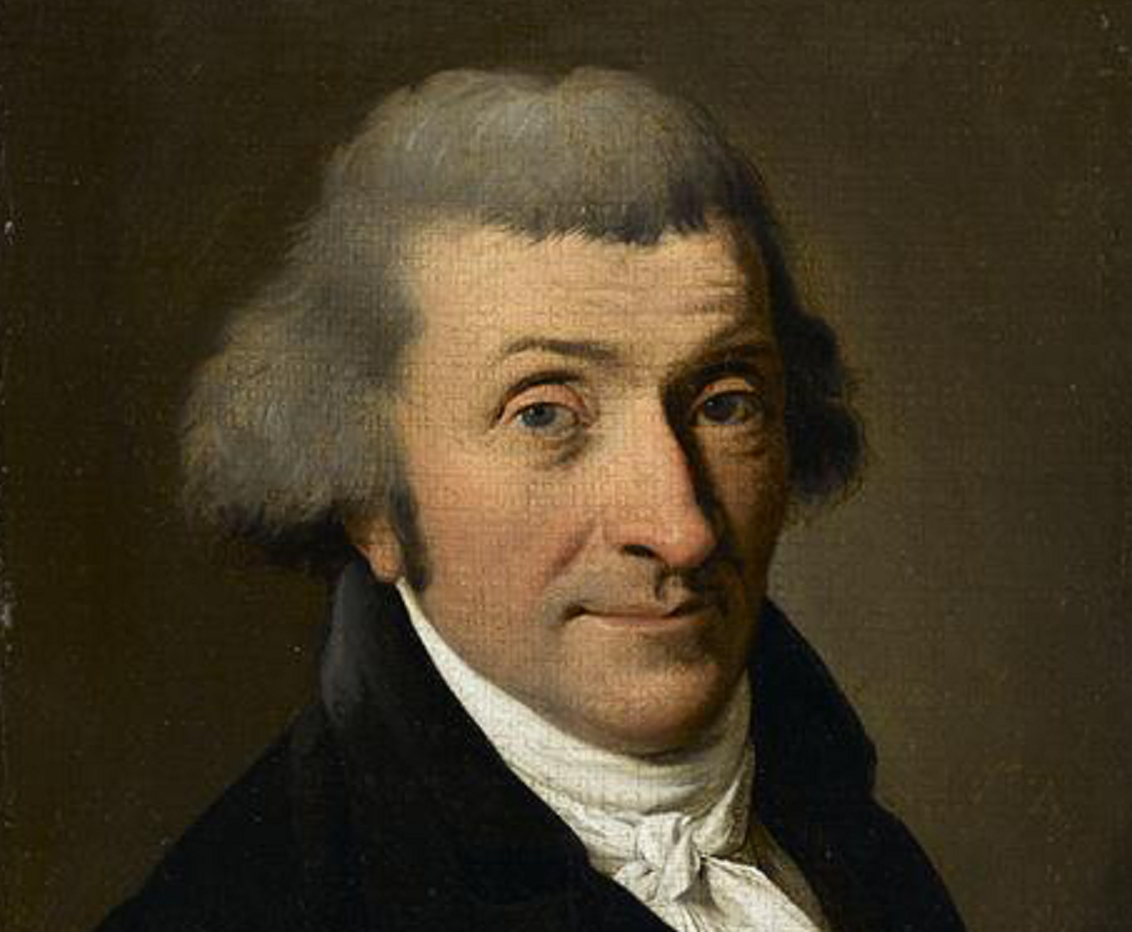 Louis-Léopold Boilly, Wikimedia Commons
Louis-Léopold Boilly, Wikimedia Commons
27. She Drove Men Crazy
Evidently, Duthé was beautiful enough to transcend oils and gouaches, because before he ascended to the throne, Charles X of France—then just the Count of Artois and younger brother of King Louis XVI—saw one of the racier paintings of Duthé...and got a scandalous idea into his head.
 François Gérard, Wikimedia Commons
François Gérard, Wikimedia Commons
28. She Was The Original Pin-Up
Legend has it that Charles was so impressed with the artwork (or, more likely, Duthé’s bare flesh) that he commissioned a portrait of her for himself, lounging near a bath in nothing. He then had the intimate portrait mounted in his bathroom at the Château de Bagatelle. But even this didn't scratch his itch.
 Thomas Lawrence, Wikimedia Commons
Thomas Lawrence, Wikimedia Commons
29. She Had The Future King Racing To Paris
Simply having her likeness hanging above his bathtub wasn’t enough. Some sources claim that Charles was so obsessed with Duthé that he soon raced to Paris to meet her in person. And there was one more twist. At the time, his wife, Marie Therese of Savoy, was pregnant with their first child. Aw.
Then Charles really went and acted the fool.
 François-Hubert Drouais, Wikimedia Commons
François-Hubert Drouais, Wikimedia Commons
30. She Made A Fool Of A King
Charles was so obsessed with Duthé that he made a scandalous public display of his affections. Allegedly, he openly pursued Duthé “in the alleys of the Palais-Royal," an act that was considered totally embarrassing and utterly beneath his royal station.
Charles, though, was too far gone to care. He showed this in other ways, too. 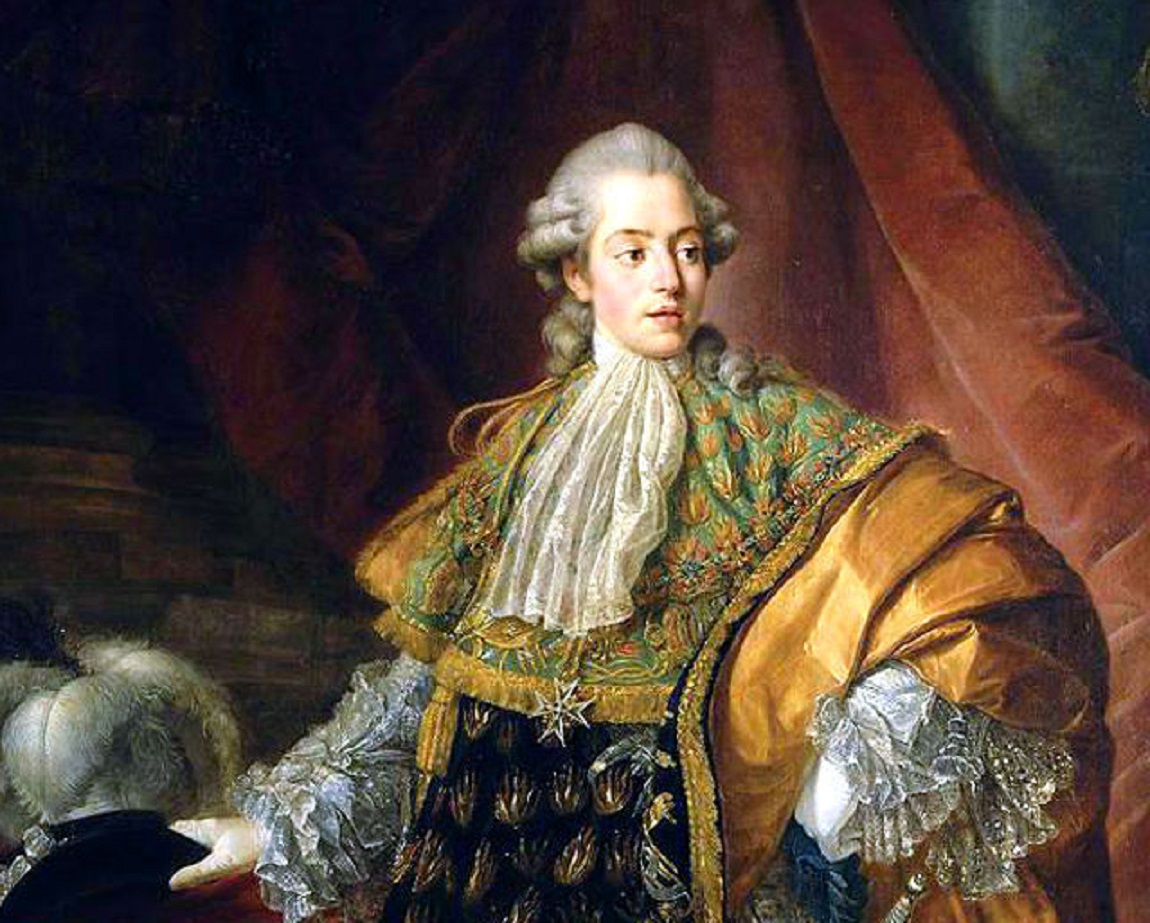 Antoine-François Callet, Wikimedia Commons
Antoine-François Callet, Wikimedia Commons
31. She Was In A Royal Situationship
Charles knew the way to a woman like Rosalie's heart, and he showered her with riches like she had never seen before and money she could probably barely count. It worked: Duthé happily relented to his overtures and the pair spent six steamy months together. Then the rumblings began.
 British Museum, Wikimedia Commons
British Museum, Wikimedia Commons
32. She Ruined A Marriage
Charles' obsession with Duthé became so obviously intense that the whole of Paris started a joke. His wife Marie Therese of Savoy was far homelier than Duthé, and in a play off Rosalie's last name (thé is French for "tea"), gossips began to quip, “The prince, having had an indigestion with the cake of Savoy, comes to take tea in Paris".
Only, Duthé was now so big, she was ripe for a downfall.  Joseph Ducreux, Wikimedia Commons
Joseph Ducreux, Wikimedia Commons
33. She Showed Up The Queen
For some people at court, especially with this new love in her life, Duthé had gotten a little too big for her britches. Then came the breaking point. She turned up at the Champs-Élysées with a more finely decorated and bejeweled “equipage” than the reigning queen Marie Antoinette. There was only one thing the queen could do.
 Joseph Ducreux, Wikimedia Commons
Joseph Ducreux, Wikimedia Commons
34. The Queen Got Revenge On Her
Duthé had climbed a long way up the economic ladder from her childhood, but the social ladder was another thing entirely. Even with her wildly expensive and gaudily decorated carriage, Paris’ high-society would never truly accept her...and Marie Antoinette was about to force her to learn that lesson.
Seeing Duthé’s more expensive finery, Marie Antoinette had Duthé thrown out of the Champs-Élysées entirely. Not that this stopped the courtesan. Jean-Baptiste André Gautier-Dagoty, Wikimedia Commons
Jean-Baptiste André Gautier-Dagoty, Wikimedia Commons
35. She Had Rave Reviews
One of Duthé's most ludicrous affairs was with Louis Philippe II, Duke of Orléans. The Duke was a Prince of the Blood who later supported the French Revolution, changing his name to Phillipe Egalitie, or "Phillipe Equality," so I'm guessing he was a wild one in bed. He also made Duthé one dirty referral. Antoine-François Callet, Wikimedia Commons
Antoine-François Callet, Wikimedia Commons
36. She Kept It In The Family
The Duke of Orléans was obviously all about equality, and he certainly shared Duthé's love all around. Namely, he passed her down to his 15 year-old son, Philippe. Apparently, the Duke wanted the young boy to "learn some facts of life," and could think of no one better than Duthé to teach him.
But the Duke probably didn't realize he was playing with fire.
 Léon Cogniet, Wikimedia Commons
Léon Cogniet, Wikimedia Commons
37. Her Lover Was Obsessed
When it came to her green lover, Duthé may have been too good a teacher. The young Philippe seems to have became totally obsessed with the much more experienced courtesan, so much so that he began to take her out in public to show her off. As it happened, not the best idea.
 Franz Xaver Winterhalter, Wikimedia Commons
Franz Xaver Winterhalter, Wikimedia Commons
38. She Made A Comeback
The teenage Philippe was so smitten with Duthé that he permitted her a rare and almost unprecedented honor: He allowed the courtesan to ride around Paris in his royal carriage. When she took the carriage out on the Champs-Élysées—maybe to thumb her nose at Marie Antoinette—it was yet another breach of decorum, as everyone was aware only nobles went around in that sort of carriage. Cue: More backlash.
39. They Wrote A Dirty Song About Her
This second incident on the Champs-Élysées led to mockery for Philippe and cemented Duthé as a (wealthy) social pariah. It went to extremes. People even created a mean-spirited song to poke fun at the whole sordid affair: "La Duthé a dû téter,” they chanted to a popular tune, which translates to a not-so-subtle reference to “suckling royally". The ridicule kept on going.
 After James Sharples, Wikimedia Commons
After James Sharples, Wikimedia Commons
40. She Had A Favorite Color
Perhaps out of jealousy more than anything else, the people of Paris’ high-society found any excuse to make fun of Duthé, even her favorite color. Like many a Barbie Girl after her, she was allegedly obsessed with the color pink, and people began speculating that “she wore no other hue, even for her underlinen”.
Eventually, Duthé had quite enough.
41. She Hated What They Said
Despite her reputation for being literally "dumb," Duthé very much had thoughts, feelings, and a voice about the constant ridicule she endured throughout Paris, especially barbs at her so-called low IQ. So when, near the height of her fame, a one-act play titled Les Curiosités de la Foire came out and explicitly made fun of Duthé’s “dumbness,” she saw red—and sought vengeance, Rosalie-style. wp:en, Picryl
wp:en, Picryl
42. She Tried To Restore Her Honor
Cruelly enough, Les Curiosités de la Foire, which "kept Paris laughing for weeks," was just a one-act play, almost entirely devoted to the thesis "Rosalie Duthé is stupid". Utterly unimpressed and annoyed at the piece, the courtesan offered a free kiss to anyone who would restore her honor. Unfortunately, this just turned tragic. 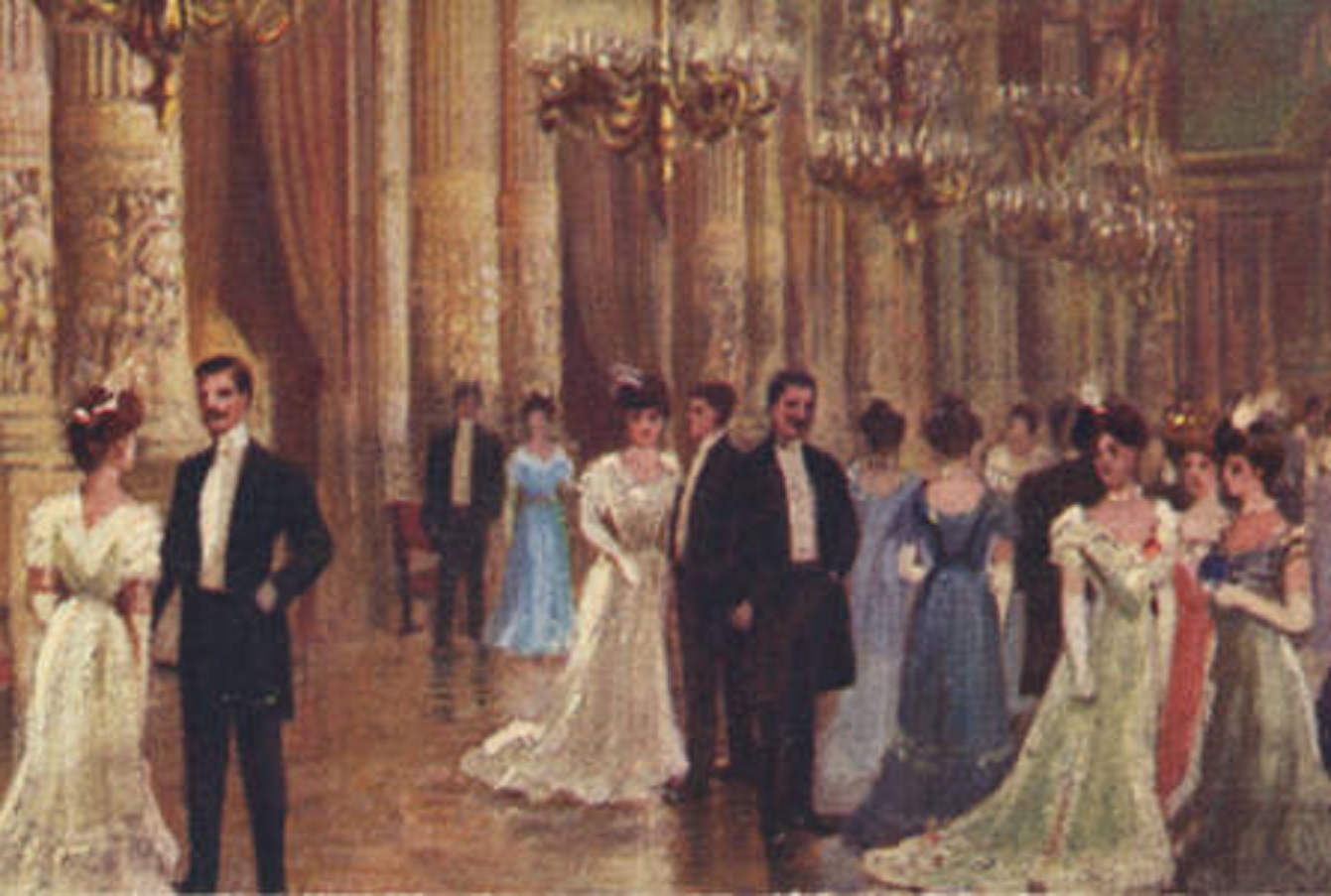 The Newberry Library, Picryl
The Newberry Library, Picryl
43. She Fell On Her Face
Rosalie Duthé was one of the most desired women of her generation...so what happened next was utterly mortifying. Amidst all her calls to take up arms for her honor, the courtesan had zero takers, and the petty play went on, its laughing audiences unabated. At least she had one consolation.
44. She Still Had It At 40
In a profession that relied almost solely on beauty, Duthé had made it very far and lasted very long. Indeed, when she was teaching young Philippe the "facts of life," she was 40 years old and still obviously at the top of her game. Eventually, however, the time came for her to retire...and then she really let loose.
45. She Had A Gilded House
By the time that Duthé was preparing for retirement, she was so spectacularly wealthy that she simply couldn’t have cared what people said about her. Allegedly, the aging Duthé rode around in her gold carriage “drawn by eight creamy white horses” and lived in a mansion that was, likewise, covered in gold.
Until a horror put an end to all that.
46. She Had To Flee For Her Life
Sadly, for Duthé, her obscene wealth but questionable career choice made her a pariah not only for the nobility of France, but also its proletariat. So, when the French Revolution broke out in, Duthé knew she had to flee for her life, and hopped over to England before she lost her head. But she did lose something else.
 Raymond Desvarreux-Larpenteur, Wikimedia Commons
Raymond Desvarreux-Larpenteur, Wikimedia Commons
47. She Lost Her Home
With Duthé away in London, revolutionaries still managed to deal her a blow. Since she was now an "emigre," they confiscated her beautiful house and declared her ownership of it forfeit before labeling it as "national goods". Duthé, shocked to hear this, made a daring move.
 François Bouchot, Wikimedia Commons
François Bouchot, Wikimedia Commons
48. She Put Herself In Grave Danger
Paris during this time was no place for a woman who had dallied with royals, but Duthé returned all the same to try to get back her possessions from the revolutionaries. She even brought along her old friend and money man Jean-Frédéric Perregaux, but she doesn't seem to have been successful.
Either way, she eventually returned to London, but nothing could keep Rosalie out of her dear Paris for long.
 École francaise, Wikimedia Commons
École francaise, Wikimedia Commons
49. She Retired In Comfort
Duthé did eventually return to Paris in 1816, and by all accounts, her later years were far more tame. She did, however, hold salons with some of the luminaries of the day, so still managed to find her way into the spotlight. She passed away gracefully in September 1830 around the age of 82.
Peaceful or not, she may have died with a secret.
50. She Might Have Been A Fake
When it’s all said and done, Catherine-Rosalie Gerard Duthé earned the ignominious distinction of being the first ever recorded “dumb blonde". That said...she may not even have been blonde. The author of On Blondes, Joanna Pitman, posited that Duthé was “arrogant, dyed blonde, and vain”.



